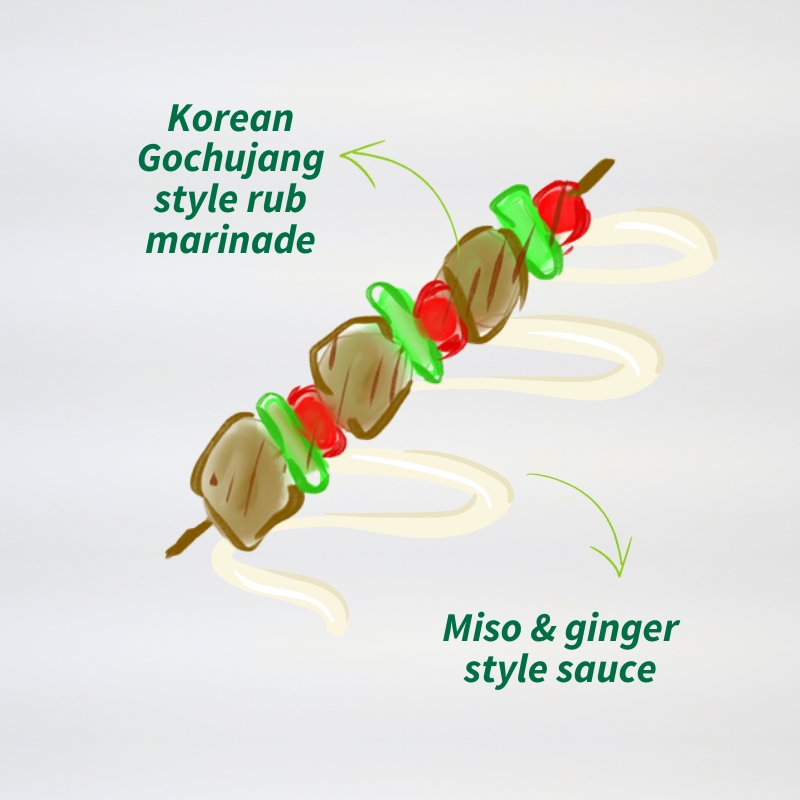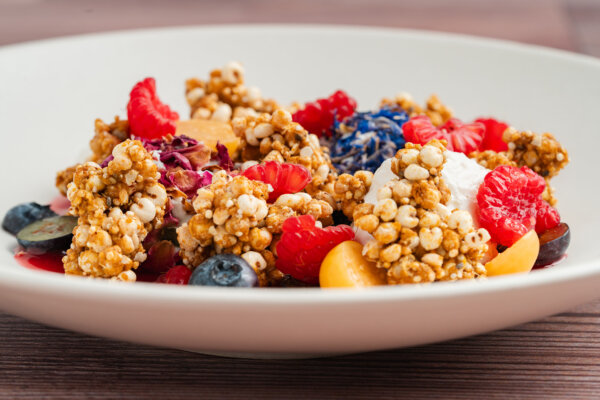
To call it “time-tested” would be an understatement. Though fermentation is one of the world’s oldest preservation techniques, it’s finding new life as an exciting catalyst for food innovation.
Fermentation can be used to extend the life of seasonal, local ingredients while introducing consumers to globally inspired flavours. These foods offer the intriguing possibility of wellness benefits, as many contain live probiotics that can be beneficial for digestive health and may contain more bioactive or bioavailable end products such as vitamins or other compounds.
Foodservice operators use fermented foods to add complexity and depth to their dishes. Miso, umeboshi, pickled vegetables, sourdough and fruit vinegars are just a few of the ingredients making their way onto menus around the world.
Fermentation is also revamping the protein industry, especially when it comes to meat, seafood and egg alternatives that are more sustainable and tastier than ever. Precision, traditional and biomass fermentation processes are being explored as efficient and scalable ways to feed the world.
In the snack category, we’re seeing interesting trends around flavour and format. Many classic snacks, such as crisps, crackers and nuts, are being revamped with popular fermented flavour profiles like kimchi and sauerkraut. On the sweet side, chocolates made through microbial fermentation are claiming to be both climate- and gut-friendly alternatives.
Fermented ingredients deliver sour, umami and tangy notes that make foods both memorable and balanced. From crave-worthy snacks to menu items that may support digestive health, fermentation presents an exciting opportunity to move the food industry forward.
3 PERFECT BITES
FOODSERVICE:
From QSR to fine dining, operators are adding fermented ingredients like kimchi to elevate the flavour profile and potential health benefits of dishes. Fermented meat and dairy alternatives are creating more sustainable dishes, too.
PROTEIN PROCESSORS:
Fermented plant-based meat, egg and dairy alternatives are on the rise. Processes such as precision fermentation are leading to breakthrough innovation that perfectly replicates the taste and texture of animal products.
SNACKING:
Fermented flavours are used to create craveable salty snacks and wellness beverages, with connections being made to gut health benefits, quality and great flavour.
FLAVOUR FROM FERMENTATION
Gochujang-Marinated Pork Skewer with Miso-Ginger Sauce
Pork seasoned with Gochujang style rub marinade, skewered with cherry tomatoes & courgette pieces for a burst of freshness. The miso brings depth and umami richness, while the ginger adds a refreshing zing to the sauce creating a delightful contrast to the spicy-sweet notes of the Gochujang style marinade.


CREATE AND INNOVATE – GROW YOUR FOOD KNOWLEDGE

THE INSIDE SCOOP ON INJERA
Injera is a fermented pancake-like flatbread traditionally made from teff flour. It’s a staple of Ethiopian and Eritrean cuisine, used both as a plate and as a utensil to scoop up stews and salads.

Injera Platter
Spongy flatbread served with atkilt wot (sautéed cabbage, potatoes and carrots), azifa (lentil salad), chermoula (herb sauce), blatjang (apricot chutney) and labneh (yogurt).
RETAIL & FOODSERVICE INSPIRATION
Fermentation preserves seasonality and can transform mundane flavours into something extraordinary.
ON THE MENU
- Plant-based “lamb” burger made with seasoned fermented vegetables, from a delivery-only brand (UK)
- Kimchi-filled hand pie in a flaky pastry shell, at a major QSR chain (Singapore)
- A fast food chain claiming the world’s largest dosa menu, with over 100 varieties available (India)
PROTEIN SPACE
- Vegan eggs made using precision fermentation, helping to protect from issues like avian flu while using less water, land and energy (US)
- Mycoprotein chicken substitutes as high-protein, high-fiber and low saturated fat alternatives (UK)
- Green pea tempeh, a naturally fermented protein- and nutrient-rich plant-based food for many culinary applications (Thailand)
RETAIL SHELVES
- Cocoa product substitutes from fermented oats and precision fermentation processes to create sustainable chocolate bars (Germany)
- Korean kimchi found as a popular flavour profile for instant ramen (Saudi Arabia, India, UAE)
- Nattō, made from fermented soybeans, reimagined as a freeze-dried snack or jerky (Japan)
- Panettone cake made with a natural fermentation process that results in a fluffy, moist texture (Brazil)
FUTURE BITES
Innovative products using fermentation techniques are popping up across the food industry. What’s coming next?
EDUCATION:
Fermented protein products will move from experimentation to a wider audience, and an important challenge will be educating consumers on the benefits of precision fermentation and similar processes.
THE HEALTH CONNECTION:
For fermentation-focused snack brands, more claims will be made between fermented items (e.g. pre- and probiotic-rich skyr and kombucha) and a broader range of possible health benefits beyond gut health, which will require substantiation through ongoing research in this space.
CHANNEL EXPANSION:
In foodservice, fermented meat and dairy alternatives are often found in fine dining. QSR and fast casual operations will further adopt plant-based fermented foods as the processes become more mainstream.
Contact your Griffith Foods representative to learn how our versatile products can enhance your culinary creations.

Sources:
Good Food Institute, “Fermentation for Alternative Proteins 101: Resource Guide,” 2023.
Mintel, 2024 FlavorIQ® Food and Flavor Outlook Report, January 2024.
© 2024 Griffith Foods. All rights reserved.



